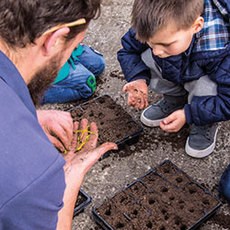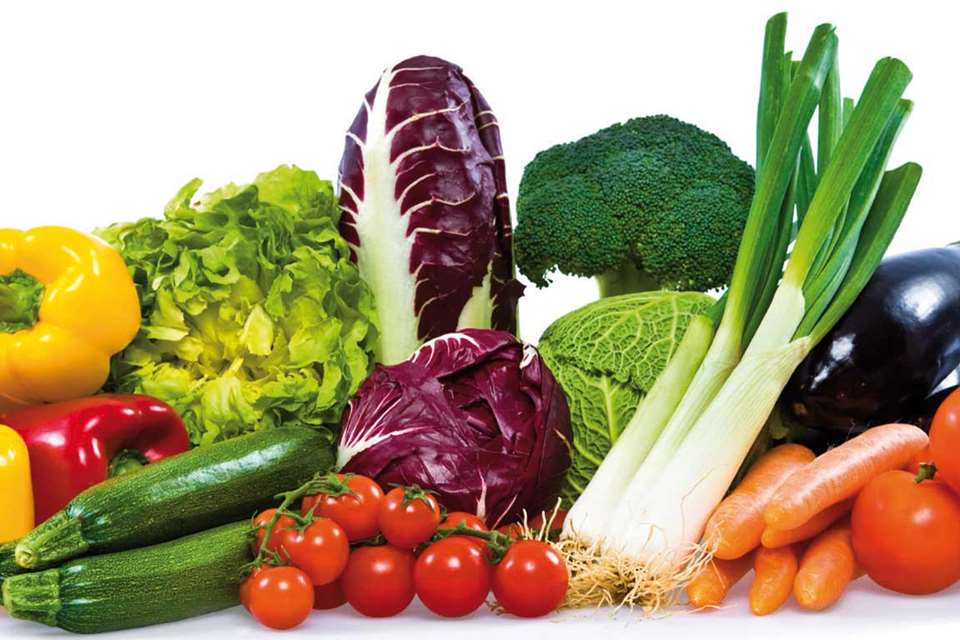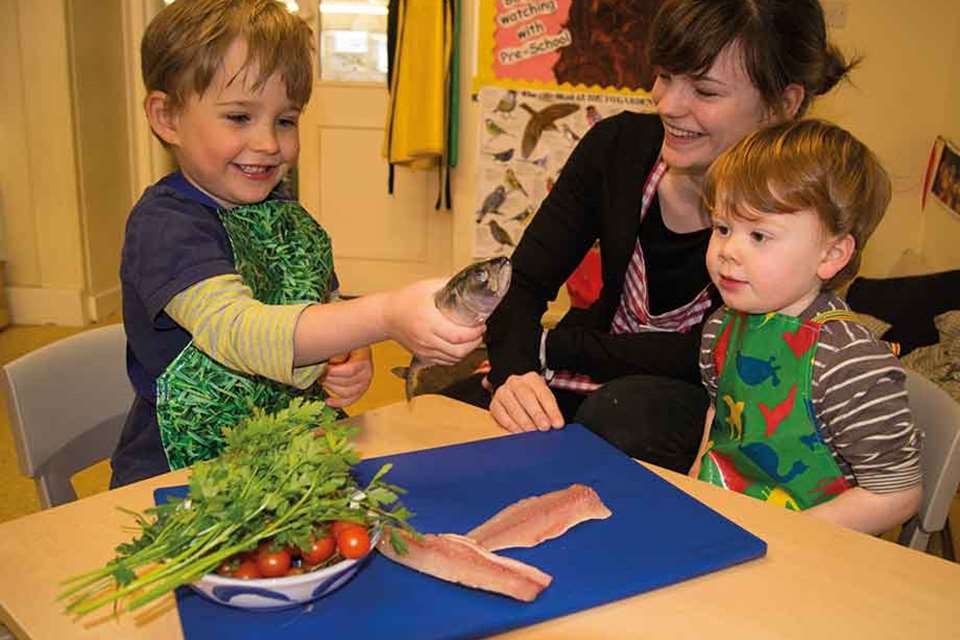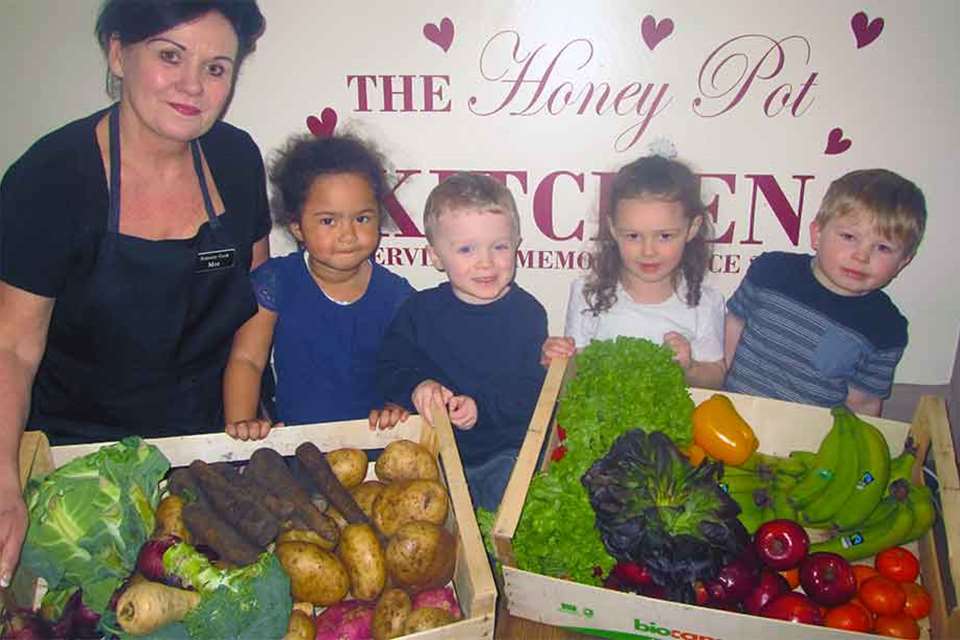A Unique Child: Health & Nutrition - Up to ten
Mary Llewellin
Monday, April 3, 2017
Now five a day is no longer enough, Mary Llewellin explores boosting fruit and veg intake even further

Hands up! Who’s eating their five portions of fruit and vegetables a day? The 5-a-Day programme was launched in the UK way back in 2003, and public awareness of the message is high, but most of us are apparently still not getting through the full five. The Government’s National Diet and Nutrition Survey in 2014 (published in 2016) showed that only eight per cent of children aged 11 to 18 met the recommendation.
Now Imperial College London has published the results of new research which found that the greatest benefits to health came from eating 800g of fruit and veg a day – ten portions…
EAT MORE, LIVE LONGER
The health benefits of a fruit-and-vegetable-rich diet are many, ranging from clearer skin, more energy and healthier bowels in the short term to reduced risk of heart disease, stroke, cardiovascular disease and cancer in later life. The research by Imperial analysed data on two million people worldwide, and the findings allowed the team to estimate that around 7.8 million premature deaths could be avoided annually if people ate ten portions of fruit and vegetables a day.
However, the results also showed that even 2.5 portions a day reduced the risk of heart disease, stroke and cardicovascular disease. So, ten is great, five is also good, and maybe we should simply all try to do our best.
WHAT’S IN A LABEL?
The food industry has capitalised on the 5-a-Day initiative and cleverly markets a range of food as ‘one of your 5-a-Day’, making it difficult to really know if you’re making a healthy choice. Smoothies and fruit juice are often promoted in this way and they do count, but only one portion a day should come from these because of their high-sugar and low-fibre content.
It may be true that jelly or a fruit-based chew is made from fruit juice, but it really is not the same as eating the whole fruit, so should we be persuaded by manufacturers that these are healthy choices? And while baked beans definitely count, can the same really be said of pasta shapes in tomato sauce?
Sometimes the additives in highly processed fruit and vegetable products, such as salt, sugar and preservatives, make the negatives outweigh the positives, and it is surely better to get used to eating and liking real food.
NO FRUIT IN A DESERT
Sadly, processed products are often easier and cheaper to buy, especially for people living in so-called ‘urban food deserts’.
If you are on a low income and living in an inner city, it’s not always easy to get to a good supermarket or fresh-food shop, and you are more likely to have a news agent or a fish and chip shop on your doorstep.
This makes our job in nurseries even more important as we support children and their families in making healthy choices and provide balanced, nutritious, home-cooked meals. Let’s hope the Government remembers this as we move towards the extended 30 hours entitlement and doesn’t force nurseries to cut costs on food and chefs in an effort to make the figures add up.
WHAT’S IN A PORTION?
What does a portion of fruit or veg look like, and are they all as nutritious as each other? For adults, a portion is 80g, and for young children the Children’s Food Trust has a very useful portion size chart with visual aids to help, which recommends 40g as a portion (25g for dried fruit). Otherwise, a portion can be measured as a handful for the person eating it.
For maximum health benefits, we should be eating more vegetables than fruit, but variety is the key. Imperial College found that certain fruit and vegetables may be more effective at preventing certain diseases: apples, pears, citrus fruits, broccoli, cabbage and cauliflower help protect against heart disease, stroke and cardiovascular disease, while spinach, green beans, red and yellow peppers, and again, broccoli, cabbage and cauliflower, seem to lower your chances of getting cancer.
The message is clear: even if children can’t or won’t eat the full recommended amount every day, whatever we can do to improve their intake and introduce them to a variety of vegetables and fruit will help to improve their health in later life.
At Snapdragons we try to tackle the issue with a multi-faceted approach. First, our menus are seasonal, which helps with introducing a range of different and new vegetables and fruit to the children. Second, we try to introduce vegetables into meals in various ways.
As well as the usual onion, celery and carrot base in a casserole, we will introduce grated or diced seasonal vegetables and beans or chickpeas, then serve the dish with two separate, plain-cooked side vegetables so that children have choice and variety.
In my recipe this month, the meatballs and the sauce have extra hidden vegetables, and then it’s served with a trio of visible veg.
HANDS-ON APPROACH
 Getting the children involved in growing and cooking also reaps rewards. At Snapdragons Keynsham, Tim has been redesigning and extending the vegetable patch with the children and sharing his passion for rare or foraged food. This week, the children helped him plant the radish seedlings they had sown earlier and indulged in a micro-salad tasting session with the spare plants, discovering that a radish seedling already tastes distinctively radishy. Next week, we’ll be picking wild garlic to fill some homemade ravioli with the children.
Getting the children involved in growing and cooking also reaps rewards. At Snapdragons Keynsham, Tim has been redesigning and extending the vegetable patch with the children and sharing his passion for rare or foraged food. This week, the children helped him plant the radish seedlings they had sown earlier and indulged in a micro-salad tasting session with the spare plants, discovering that a radish seedling already tastes distinctively radishy. Next week, we’ll be picking wild garlic to fill some homemade ravioli with the children.
We’re also celebrating Food for Life’s Grandparents’ Gardening Week by planting out our new rare herb area with the children and their grandparents so that the whole family gets involved. We’re focusing on vegetables that can be harvested and eaten straight from the plant. Nothing is nicer than a sweet and juicy pea that you’ve popped from the pod, and every little helps!
FURTHER INFORMATION
www.gov.uk/government/uploads/system/uploads/attachment_data/file/551352/NDNS_Y5_6_UK_Main_Text.pdf
Imperial College London research, www3.imperial.ac.uk/newsandeventspggr/imperialcollege/newssummary/news_22-2-2017-16-38-0#
Mary Llewellin is operations manager at Snapdragons. Snapdragons Keynsham has the Food For Life Partnership Gold Catering Mark and was winner of the Nursery World Nursery Food Award in 2012 and 2014.











